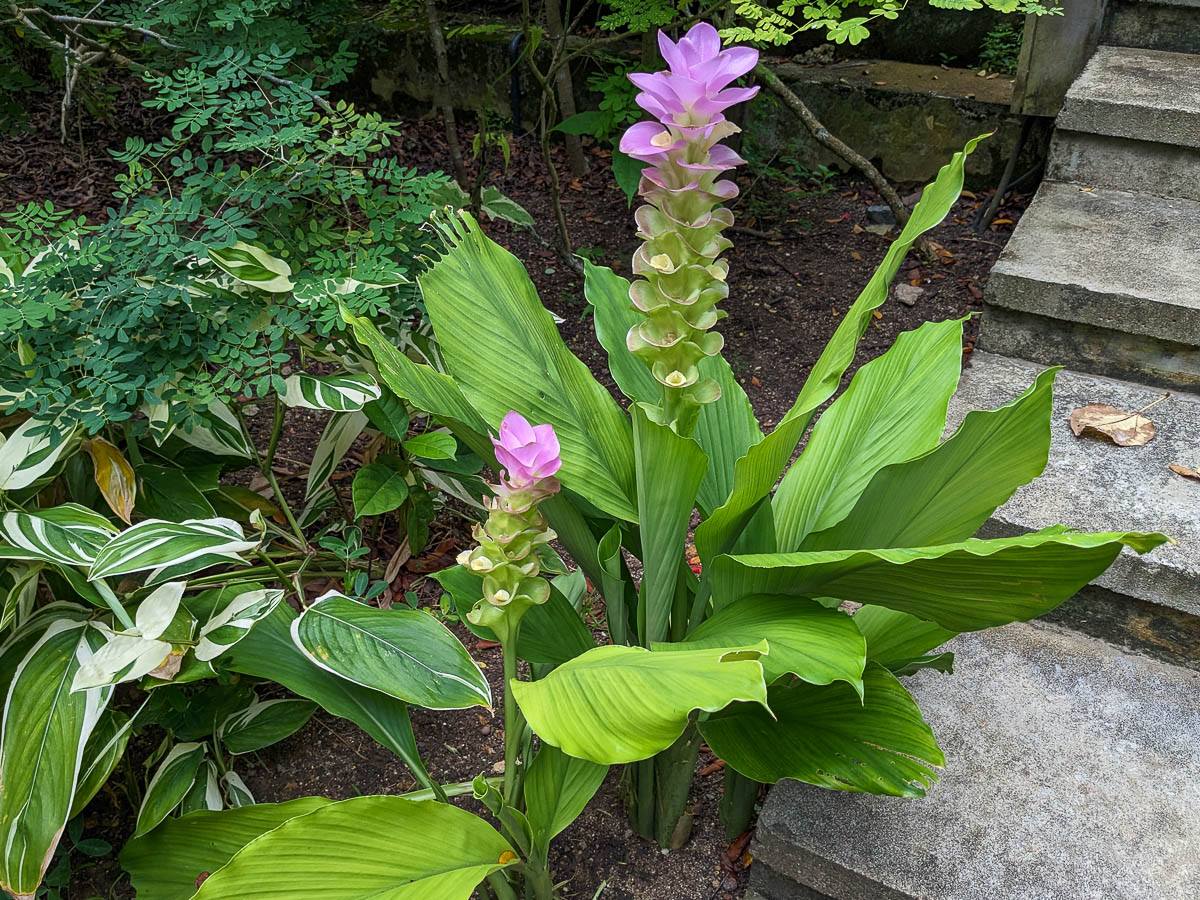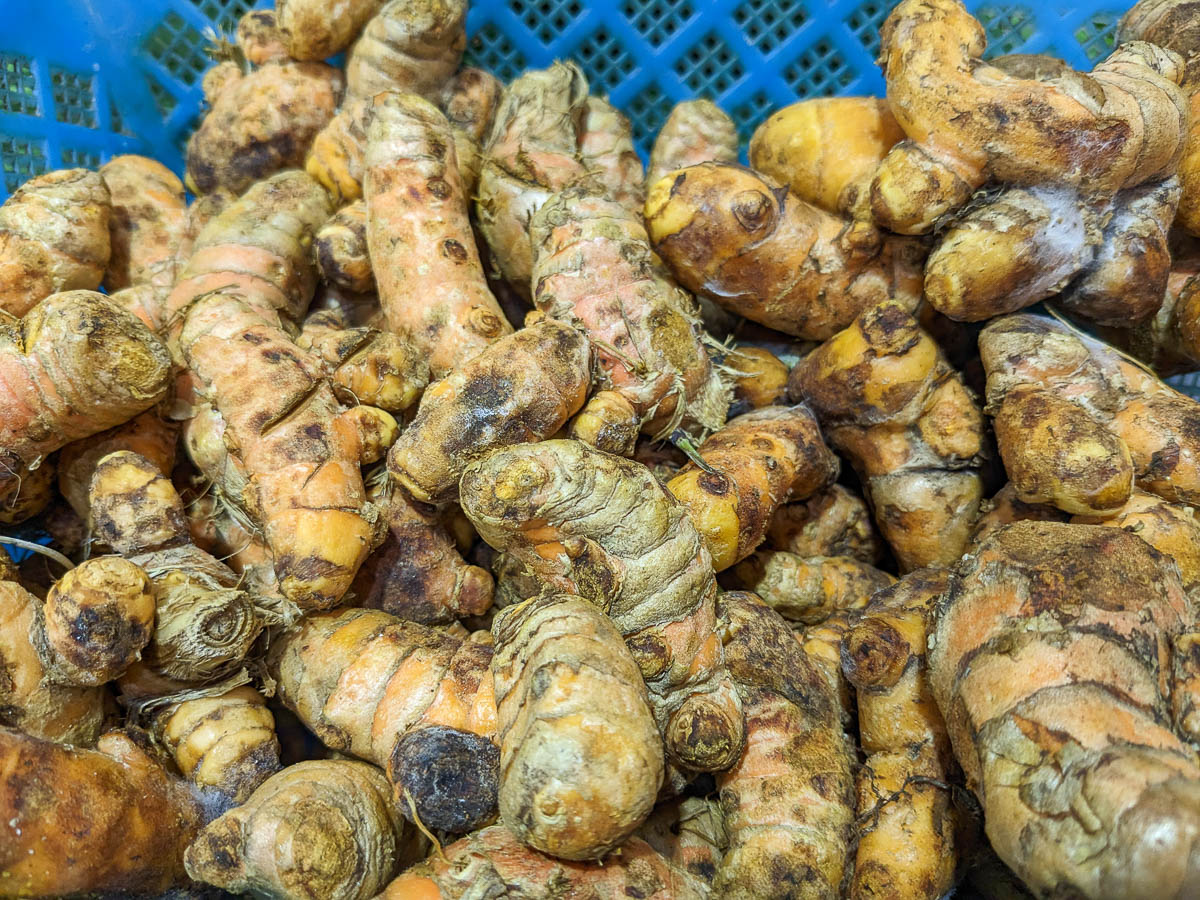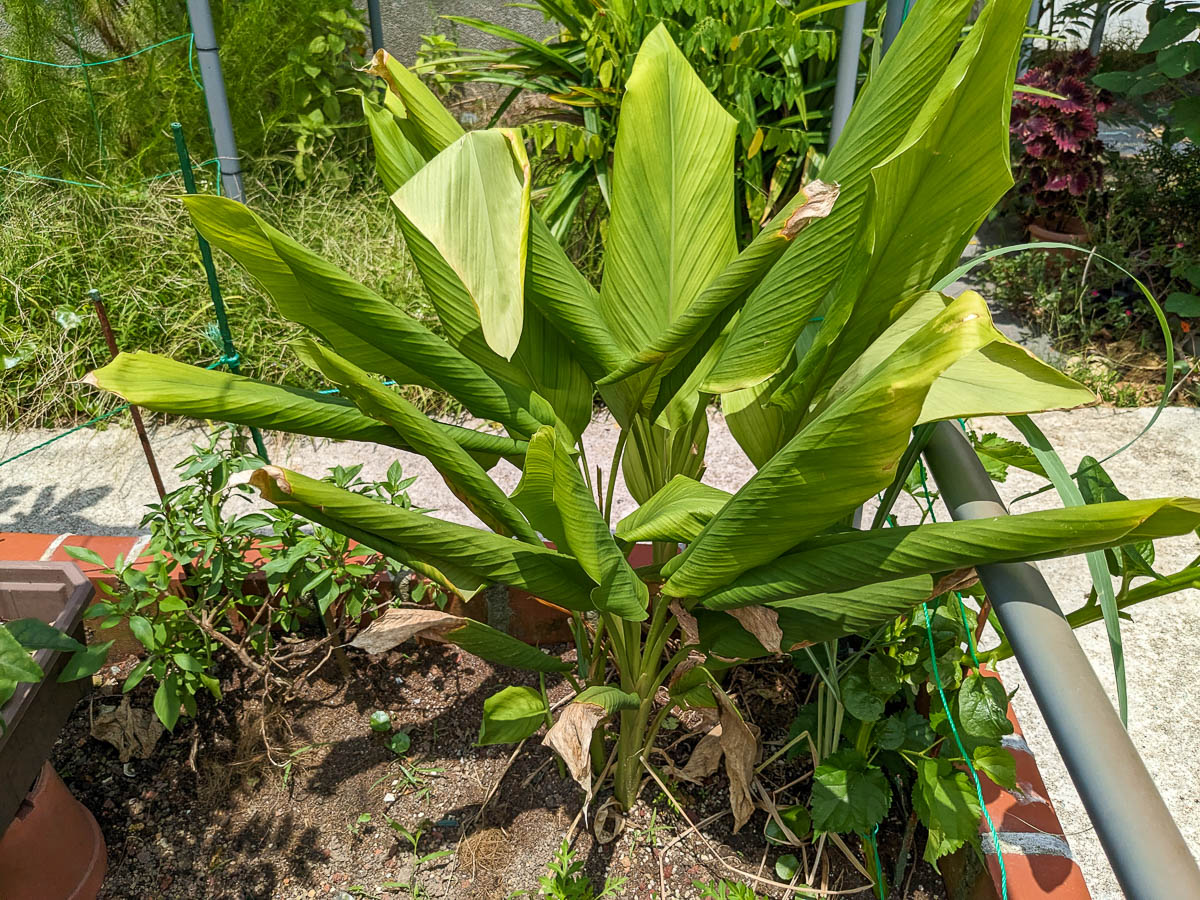Turmeric
Turmeric (Curcuma longa)
Other common names: Kunyit, 黄姜
.jpg)
Turmeric is an important spice in South Asian and Middle Eastern cuisine that adds a bittersweet flavour and bright yellow colour to curry. It is extracted from the rhizome, an underground horizontal stem that resembles a tuberous root. Turmeric is used to flavour and colour for curries, drinks and desserts.
It is a medium perennial crop that readily grows in the tropics in both true ground and in pots.
Turmeric is part of the Zingiberaceae or Ginger family, which includes other popular edible plants like Torch Ginger and Sand Ginger.
Sun and soil needs:

Turmeric thrives in 2-6 hours of direct sunlight, but plants can also tolerate about 4-8 hours of indirect sunlight.
Plants do best in pots with loamy soil at least 15cm deep, or in true ground. These plants are vulnerable to root rot, so ensure that your pots drain well, and that your soil has plenty of organic matter to let the roots breathe.
This plant will not do well in places with a lot of wind, like on rooftop gardens or corridor gardens on high floors. Protect the plant with other larger plants nearby to block off the wind.
Growing:
Turmeric naturally grows in clusters as the plant grows more rhizomes. Thin plants out to give them around 5-10cm of space to encourage the production of more rhizomes.
Harvesting:

Plants can be harvested for rhizomes at any time. They are typically harvested continuously via division.
Take note that the yellow sap can stain clothes and skin and is notoriously hard to remove. Use gloves and a gardening apron to avoid this.
Propagation:
Turmeric is propagated via division of the rhizome.
Common problems & solutions:

This plant is relatively resistant to pests and disease if kept healthy.
Wilting leaves during hot weather is a sign of heat stress. Increase the number of times the plant is watered daily, and apply mulch at the base to prevent water loss.
Aphids, Mealy Bugs, Whiteflies, and Spider Mites often infest the plant if it has wilted from heat stress. Mechanical pest control methods like pruning the infested parts are the best methods for managing these pests.
These plants are vulnerable to sunburn in more than 6 hours of direct sunlight. Use shade netting to protect your plants or replant in a shadier spot.

